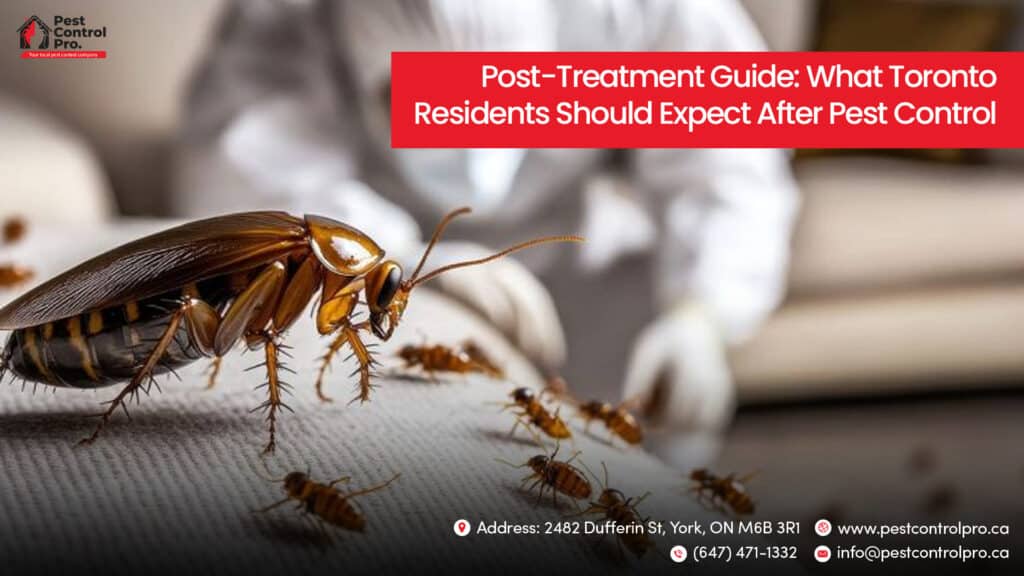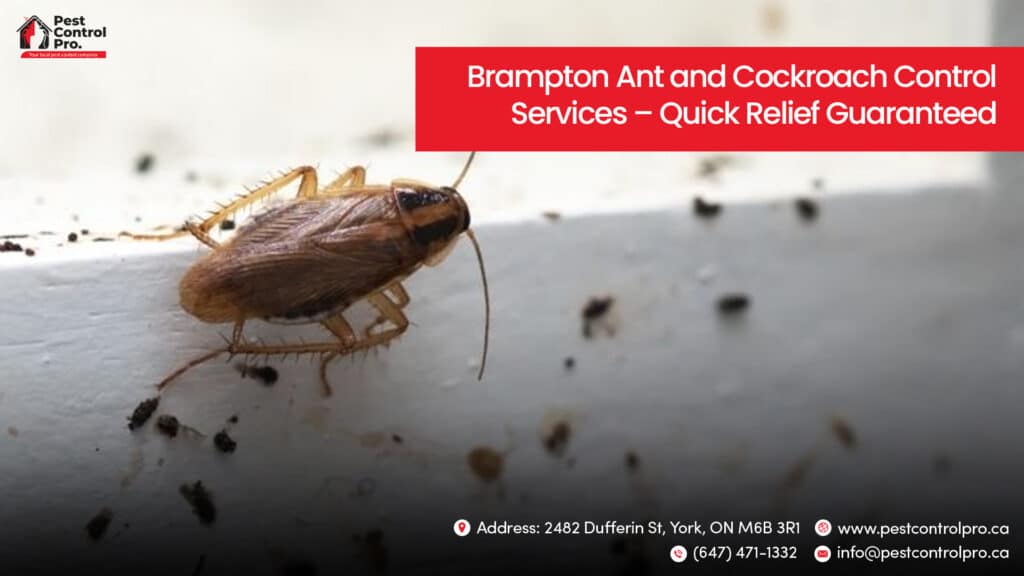After pest control, you can expect a temporary increase in pest activity. This occurs as the treatment forces pests out of their hiding spots. Remember, this spike indicates that the treatment is effective, not failing. It’s important to refrain from cleaning too soon to ensure the pesticide remains potent.
Consider follow-up treatments and long-term prevention strategies for enduring results. For instance, sealing entry points and maintaining cleanliness can help keep pests at bay. Did you know that some pests can reproduce quickly, leading to infestations in just a few weeks? Staying proactive is key.
As your pest control professional, I’m here to guide you through the next steps. Let’s work together to create a pest-free environment!
Overview of Pest Control Treatment Expectations
When you undergo pest control treatment, you may initially see more pests around your home. This increase is a positive sign; it shows that the treatment is pushing pests out of their hiding spots.
Pay close attention to the pest activity in the following days to gauge how well the treatment is working and if you need any follow-up services.
Typically, the sprays take about 2 to 4 hours to dry. During this time, it’s best to stay out of the treated areas to ensure safety and effectiveness. Some stronger pesticides might require you to leave the premises temporarily, but many of today’s eco-friendly options allow you to return sooner.
Remember, seeing more pests at first doesn’t mean the treatment has failed. In fact, it indicates that your pest prevention methods are actively working to eliminate them over time.
Fun fact: Did you know that a single female cockroach can produce between 30 to 40 offspring in just one month? This is why effective pest control is crucial.
Understanding Initial Pest Activity After Treatment
After treatment, you may see an increase in pest activity around your home. This uptick often signals that your pest control treatment is effectively pushing pests out of their hiding spots.
While it can be alarming, keep in mind that the treated surfaces will continue to kill pests over time, usually leading to a decrease in activity within a few days.
It’s crucial to remember that some infestations require multiple treatments, which can cause fluctuations in pest visibility between visits. By closely monitoring pest activity, you can gauge the effectiveness of the measures taken and determine if follow-up actions are necessary.
Did you know that some pests, like cockroaches, can survive without food for up to a month? This highlights the importance of persistence in pest management.
Importance of Following Pest Control Instructions
To ensure effective pest control, it’s crucial to follow the specific instructions given by your pest management professionals. Failing to adhere to these guidelines can diminish the effectiveness of the treatment, leading to prolonged infestations and increased stress for you and your family.
| Key Considerations | Importance |
|---|---|
| Cleaning Timing | Cleaning too soon can disrupt the treatment process. |
| Type of Pest | Each type of pest requires tailored instructions for best results. |
| Multiple Treatments | Consistency in following up with treatments is vital for success. |
| Treatment Products | Overzealous cleaning can remove the efficacy of the products used. |
| Peace of Mind | Adhering to instructions not only aids in pest eradication but also provides peace of mind. |
Did you know that the average American home can be host to over 100 different species of pests? That’s why it’s essential to take pest control seriously. By following the expert advice of your pest control professionals, you can effectively manage and eliminate unwanted pests from your home. Remember, the clearer you follow the instructions, the better your chances of success in maintaining a pest-free environment.
Guidelines for Cleaning After Pest Control
Cleaning your home too soon after pest control can actually reduce the effectiveness of the treatment. To ensure successful pest management, follow specific cleaning guidelines based on the type of pest you’re dealing with.
For instance, after treating for bed bugs, avoid deep cleaning. This can disturb their hiding spots, making it harder to eliminate them.
If you’ve had a cockroach treatment, refrain from wiping down treated surfaces immediately, as this can remove essential pest control products.
After spider treatments, it’s fine to vacuum up any dead spiders, but hold off on cleaning baseboards where the treatment was applied.
Always follow your pest control technician’s instructions closely. Doing so will help maintain the effectiveness of the treatment you’ve invested in.
Ventilation and Air Quality Considerations
After pest control treatments, it’s crucial to ventilate the area for safety and health. Wait 2 to 4 hours before returning to the treated space. This time allows the pesticides to dry and any airborne particles to settle.
To boost air quality, open all windows and doors right after the treatment. This will help air circulate and disperse any lingering odors. You can also place fans near these openings to increase airflow, which helps remove particles and odors more quickly.
Additionally, turn on exhaust fans in kitchens and bathrooms, as these will aid in eliminating remaining smells and airborne particles.
By focusing on proper ventilation, you ensure a safe environment for everyone in your household, including pets and children. Did you know that good ventilation can also reduce the levels of indoor air pollutants significantly?
Monitoring for Remaining Pests
Monitoring for remaining pests is crucial after treatment. You may notice a temporary increase in pest activity as they come out from their hiding spots. Regularly checking for pests over the next few weeks is important because it can take time for the treatment to fully eliminate the entire population. Keep a vigilant eye on previously affected areas and potential entry points.
| Monitoring Strategy | Purpose | Tools |
|---|---|---|
| Regular Inspections | Identify pest activity | Visual checks |
| Insect Monitors | Track movement | Sticky traps |
| Baited Traps | Assess treatment effectiveness | Baited traps |
| Contact Pest Control | Get follow-up advice | Pest control service |
If you still see pests, it’s wise to reach out to your pest control service for further assistance. Did you know that some pests can lay hundreds of eggs in a single week? This makes prompt monitoring and action even more critical. As a Pest Control Pro, I recommend staying proactive in your pest management efforts.
When to Schedule Follow-Up Treatments
To determine when to schedule follow-up pest control treatments, you should aim for a timeframe of 2 to 4 weeks after your initial application.
For stubborn invaders like bed bugs and cockroaches, this is crucial. If you spot any pests within a week, don’t hesitate to call for a follow-up.
The specific timing can depend on the pest type and how severe the infestation was. For tailored guidance, reach out to your pest control company.
They may also suggest regular maintenance visits every 1 to 3 months to keep pests at bay.
Did you know that the common cockroach can live for up to a week without its head?
Monitoring pest activity is vital for ensuring that your pest control efforts are effective and long-lasting.
Long-Term Pest Prevention Strategies
To ensure long-lasting pest prevention, you must take a proactive stance that blends consistent upkeep with strategic actions. Here’s how you can effectively keep pests away from your home or business:
– Deep cleaning: Make it a habit to regularly vacuum and scrub your living areas. This helps eliminate food fragments and nesting materials that attract pests like ants or rodents.
Did you know that a single crumb can lead to an entire colony invading your space?
- Seal entry points: Inspect your property for any gaps or cracks around windows, doors, and foundations. Sealing these openings with caulk or weather stripping can effectively block pests such as spiders and cockroaches from sneaking inside.
- Routine inspections: Conduct regular checks in areas prone to infestations, like basements and attics. By catching any signs of pest activity early, you can take swift action, preventing minor issues from escalating into major infestations.
Frequently Asked Questions
How Long After Pest Control Is It Safe for Humans?
After pest control, it’s safe for you to reenter your home after 2 to 4 hours. Ensure that you ventilate the area well during this time. Your family’s safety is crucial, so keep an eye out for any signs of chemical exposure. It’s best to avoid cleaning surfaces for a week to allow the treatment to take full effect.
Did you know that pest control treatments can vary widely in their active ingredients? Some might use natural substances while others rely on synthetic chemicals. Always ask your pest control professional about what they’re using to ensure you’re informed.
What Happens After Pest Control Sprays?
After pest control sprays, you will see noticeable changes in pest behavior. The treatment drives pests out of their hiding places, making them more visible. Keep an eye out for any chemical residues on surfaces. It’s essential to allow the treatment to set for the recommended duration to ensure maximum effectiveness. This helps maintain a pest-free environment in your home or business.
Did you know that some pests, like cockroaches, can hold their breath for up to 40 minutes? This resilience makes proper pest control crucial. So, stay vigilant and monitor your space for any signs of pests after treatment. Your proactive approach will help keep your area clean and safe.
Can I Sleep in the Room After Pest Control?
Yes, you can sleep in the room after pest control, but it’s important to take some precautions first. Ensure that the room is well-ventilated for at least 30 minutes. This allows any residual chemicals to dissipate, ensuring a safer environment for you. Following the pest control treatment, waiting a bit can enhance its effectiveness and help protect your well-being during the recovery phase.
Did you know that certain pest control methods target specific insects? For instance, bait traps are often used for ants, while sprays might be more effective against cockroaches. As a pest control pro, I recommend checking with your pest control provider for specific guidelines based on the treatment used in your home. So, prioritize safety by following these steps before settling in for a good night’s sleep!
Should I Open Windows After Pest Control?
Yes, you should open windows after pest control. Ventilation helps in several ways. It improves indoor air quality, minimizes chemical exposure, and ensures the safety of the pest control treatment. Proper airflow is vital for your comfort and enhances the effectiveness of the treatment.
Did you know that many common household pests, like ants and roaches, are attracted to food debris and moisture? Keeping your home clean can help prevent infestations. As a pest control pro, I advise you to keep those windows open for a while after treatment; it makes a difference!



